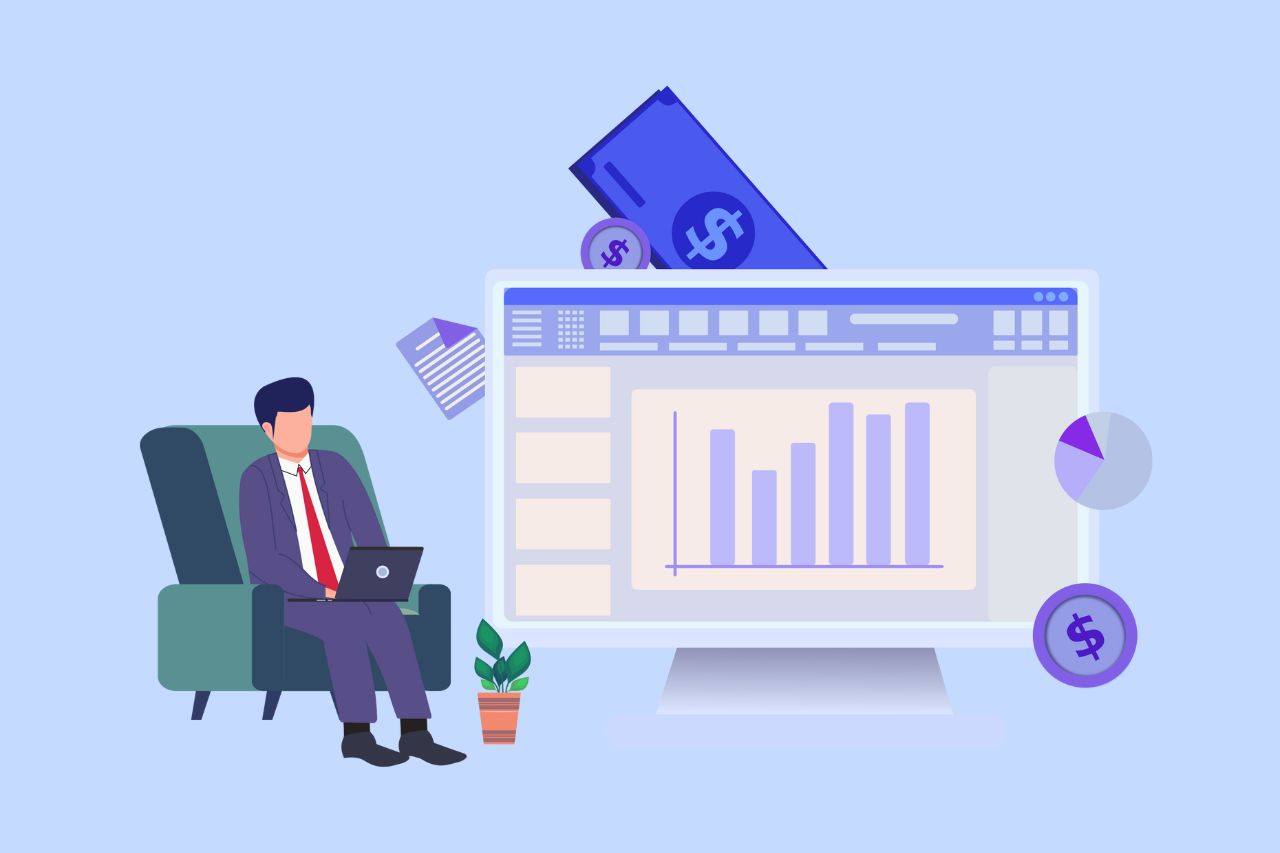Website Accessibility and Standards for Government Websites
Expert designers and developers know that following the best practices equals success. Whether you are building a house, developing a community, or creating a website for your government organization, knowing the best practices in your field will eliminate time wasted on figuring out what works. Of course, if you have years to spend on trial and error strategies, go for it. Still, we prefer to reserve this strategy for the development of new techniques. So instead of reinventing the wheel, we allow best practice techniques to keep the successful wheels spinning.
At the top of the list of when to follow best practices is following when it’s the law. Did you know that in Louisiana, it’s illegal to send a pizza order to a friend without them knowing? Of course, if you were planning on sending that pizza from Domino’s, which is currently involved in a website accessibility lawsuit, you may have been unsuccessful anyway. Hopefully, Domino’s will accept the need for an accessible website sooner rather than later. We may not know every law in existence, but we do know that government web accessibility standards require government organizations to provide an accessible website.

In 1988, Congress amended the Rehabilitation Act of 1973. The amendment requires federal agencies to make their electronic communication accessible to people with disabilities. This applies when a government organization develops, procures, maintains, or uses electronic and information technology. The access given to employees with a disability and members of the public must be comparable to the access available to others. Our Web Accessibility Standards & Laws article explains more about the various accessibility laws in the U.S., including the Americans with Disabilities Act.
Why is website accessibility important to government websites?
Government accessibility standards require organizations to provide accessible content. In addition to web accessibility simply being best practice and purely ethical, here are just a few of the reasons why having an accessible website is important:
- Many people look at how the government does things to figure out the “acceptable” way. Because the government sets and enforces the laws, we expect the government to be the first organization to abide by the laws they set. If government agencies are setting the bar for accessible websites, we should expect to be able to follow their lead.
- Government websites contain a slew of useful information and programs for the public to allow us to do everything from renewing auto tags to applying for jobs so we can advance our careers. If a government organization requires us to visit a website to do the tasks we’re required to do as citizens, the website must ensure everyone can actually access the information.
- An accessible government website will actually make it easier for some people with a disability to obtain information and perform tasks they’re required to complete. For example, consider a blind user who wants to apply for a position with a government agency. With an accessible website, they no longer need to have someone bring them to the physical location to obtain an application and then have someone assist them to actually complete the application. Instead, they can independently apply online, upload required documentation, and have a virtual interview.
Government web accessibility standards
That depends on whether your organization is a state or federal agency…sort of. If you are a federal government agency, the U.S. Access Board is responsible for the development of accessibility standards that apply to your website. Section 508 of the Rehabilitation Act lists the standards you’re required to follow.
If you are a state government agency, you’re still required to be accessible. However, depending on your state, your policies may vary. Some states have adopted policies that require compliance with Section 508. Let’s consider what New York and California require for website accessibility.
- New York’s state policy references Section 508 as well as the popular Web Content Accessibility Guidelines. So if you’re in New York, these are your guidelines.
- California also requires state entities to comply with Section 508. Additionally, as of October 2017, California must comply with AB 434. AB 434 requires state agencies and state entities to post a certificate of compliance on the home page of their websites. If you are in California and this is the first time you’ve heard about AB 434, let us know. We will help you quickly get your website into compliance.
For a growing list of individual state policies, visit Section 508’s State Policy page.
What are the Section 508 standards for government website accessibility?
Section 508 of the Rehabilitation Act outlines electronic accessibility standards in 508 Chapter 2: Scoping Requirements. It states that content must be accessible if it is public facing and/or agency official communication. We especially like how Section 508 clarifies agency official communication and defines this type of communication as:
- An emergency notification;
- An initial or final decision adjudicating an administrative claim or proceeding;
- An internal or external program or policy announcement;
- A notice of benefits, program eligibility, employment opportunity, or personnel action;
- A formal acknowledgment of receipt;
- A survey questionnaire;
- A template or form;
- Educational or training materials; or
- Intranet content designed as a Web page.
EXCEPTION: Records maintained by the National Archives and Records Administration (NARA) pursuant to Federal record keeping statutes shall not be required to conform to the Revised 508 Standards unless public facing.
It’s important to note that just because something isn’t public-facing does not excuse it from being accessible. The detailed list provided removes the guesswork of knowing exactly what needs to be accessible. This means before you send out the new employment opportunity announcement, you need to make sure it’s accessible.
Although the guidelines listed in the requirements are brief, take particular notice of E205.4 Accessibility Standard which states:
Electronic content shall conform to Level A and Level AA Success Criteria and Conformance Requirements in WCAG 2.0…
Requiring WCAG 2.0 compliance should ease your worries about having to learn something in addition to WCAG. Applying WCAG success criteria enables you to comply with federal accessibility laws, specifically, Section 508. Think of it this way: Section 508 tells you what to do and WCAG tells you how to do it.
In addition to reorganizing the standards, the U.S. Access Board defined agency official communication and required WCAG A and AA compliance during the Section 508 refresh in 2017. Like us, they did not see a need to reinvent the wheel and took advantage of the guidelines already proven successful for web content.
Do I really need to know WCAG?
If you need to comply with Section 508 Standards, then yes. If you are going to design, develop, and manage your organization’s website, then yes. Even after completing a website’s development phase and making it visible to the world (or your internal world if you are working on an intranet), every employer and/or employee who adds, removes or contributes to the website in some way must know how to do it in an accessible manner. Otherwise, your website will go from compliance to lawsuit the moment your team publishes new content.
If you hire accessibility experts, like Be Accessible, to design, develop, and manage your website, having a general knowledge of WCAG will suffice. You still need to be sure the content you submit, such as PDF documents and videos, is accessible. However, using an accessibility expert will eliminate the risk of accessibility barriers ever making it to your website.
We’ve posted free resources to help you learn and apply web accessibility into your workflow.
How web accessibility benefits business owners
If you are a business owner, you may be familiar with the term bounce rate. The bounce rate of a website is the version of a metric that measures the rate of how long users stay on a website. Unlike conversion rates that we want to be high, our goal is to have a lower bounce rate. Following the web accessibility guidelines can significantly contribute to reducing this rate. The lower the bounce rate, the better, because it means people are staying on the website longer. This is often adhered to within various web entities and is incorporated within their policies pertaining to user retention.
On the contrary, a higher bounce rate indicates a poorly constructed site version, particularly if it fails to meet web accessibility standards. A website that ignores the importance of accessibility and lacks necessary elements would fit this description perfectly. Elements of a poorly constructed site include things like non-responsive design, lack of color contrast, and missing form labels.
Our primary aim is to keep people on our website longer so that they discover more reasons why they should choose us over our competitors. A study found that a staggering 71% of disabled web users will leave a website version that does not fulfill accessibility requirements. This is a large enough percentage to significantly impact the overall bounce rate. Hence, all business entities must incorporate accessibility requirements into their policies to avoid a potential loss of customers.
A recent study done in Canada shows people with disabilities make up a big part of Canada’s population. It says that about 1 in 5 people aged 15 and older have at least one disability. That’s over 6 million people in Canada alone!
As a business owner, you need to opt for a professional web design and development agency who is well-versed in creating accessible websites. By doing this, you avoid losing many potential customers by not being inclusive.
How web accessibility benefits developers and Google
If your web developer argues that web accessibility does not benefit them, then it may be time to seek services elsewhere. The value of web accessibility for developers, especially in today’s digital version of the age, is undeniable. Developers take pride in crafting high-quality websites and understand that cleaner code paves the way for a faster and more proficient website. If a website’s load time is slow or it fails to rank high in search results, the development team is usually held accountable. HTML elements (code) have semantic meaning, and web entities optimize their website’s accessibility and performance by using code as intended.
Apart from reducing bugs and enhancing loading speed, semantic code also aids search engines such as Google and Bing in indexing the content, thus facilitating higher search rankings. Let’s imagine a webpage version constructed to compare web development platforms like WordPress and Shopify and how its organization of content using heads and visual elements can increase its potential visibility.
What happens if a website isn’t accessible to people with disabilities?
First of all, refer back to our comment above about best practices. The top best practice is following the law. Nevertheless, if you still want to consider whether following government accessibility standards is worth it, let’s consider the risk of inaccessibility.
In recent years, federal courts have seen website accessibility lawsuits increase tremendously. According to research performed by attorneys at Seyfarth Shaw, these statistics are current as of 2023:
- In 2023, federal courts received 2,794 website accessibility lawsuits.
- Website accessibility lawsuits account for 34% of all ADA Title II lawsuits filed in 2023.
- New York federal courts were the busiest, followed by Florida in second place and Pennsylvania in third. Illinois moved ahead of California to claim the fourth spot.
- In 2023, 2,152 lawsuits were filed in New York federal courts.
Why do I need services of Be Accessible?
While we aren’t going to be the whistleblower that adds you to these statistics, we will help you avoid them. If knowing the risk is all you needed to know, go ahead and contact us now. We’ll begin right away to make your website accessible and compliant with website accessibility standards and laws.
Our team of accessibility experts will transform your website so everyone, including those with disabilities, has access to all of your information all the time. We will ensure your website is accessible to assistive technologies such as screen readers, has sufficient color contrast, allows for text zoom and complies with all of the other Section 508 Standards and WCAG requirements. We love what we do and are excited to work with you!
Contact Us
Please complete all fields.
Recent Posts

How to Write Content That Follows Web Content Accessibility Guidelines
Accessible content is a must for everyone, regardless of ability, to easily browse, comprehend, and interact with the information. It first became a facilitator of users, a trust-sponsor, engagement-booster, and quality-enhancing and reach-extending factor for all digital experiences. Why Accessible Content Matters This approach benefits people with disabilities, older adults, […]

Web Accessibility Laws and Legislation
More often than not, a website is the first impression for potential customers. Because of this, it’s no surprise that today, web design is a $38.3 billion industry.

The Importance of Digital Accessibility for Financial and Banking Websites
Inclusive design helps make everyday services easier to use for people with disabilities. This is particularly important for financial websites, where users need to access sensitive information and complete transactions securely and independently. By prioritizing accessibility, these websites can remove barriers related to vision, hearing, mobility, or cognitive differences, creating […]